What are the varieties of coffee beans? Introduction of common coffee varieties? What's so special about different varieties?
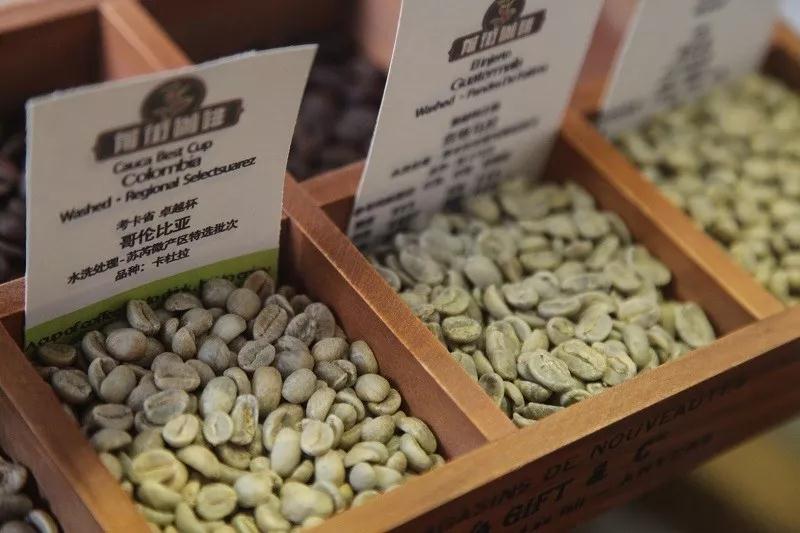
Professional coffee knowledge exchange more coffee bean information please follow the coffee workshop (Wechat official account cafe_style)
What are the varieties of coffee beans? Introduction of common coffee varieties?
There are more than 6000 species of coffee trees, most of which are tropical trees and shrubs. There are four main coffee trees in the world, of which only two are of real commercial value and are planted in large quantities, and the quality of the coffee beans produced by other coffee trees is also higher than that of other coffee trees.
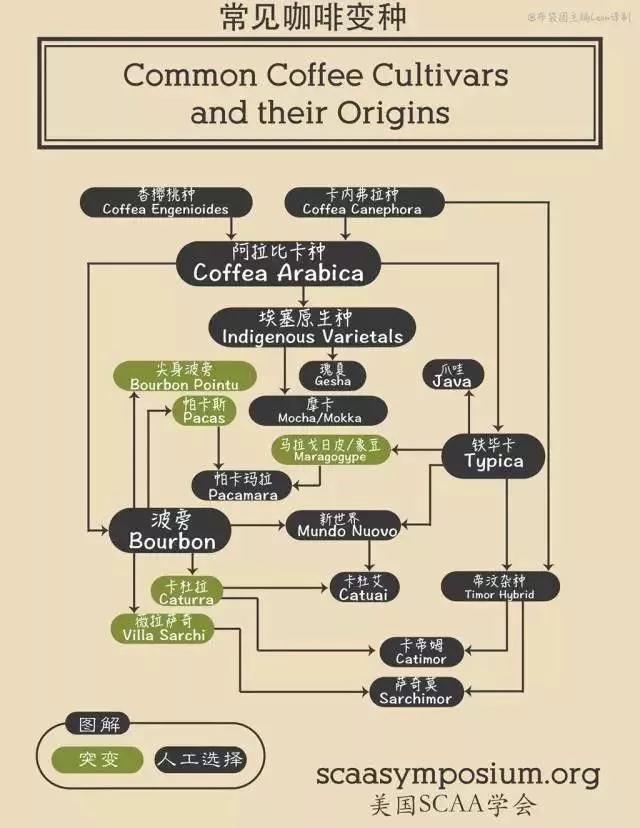
The first is Arabica beans, the world famous blue mountain coffee, mocha coffee, etc., almost all Arabica species. The other is Robasta species, Robasta coffee tree origin in Africa Congo, different varieties of coffee beans have different tastes, but even the same variety of coffee trees, due to different soil, different climate and other effects, the growth of coffee beans also have unique flavor. The other two species are Liberian and Ethiopian.
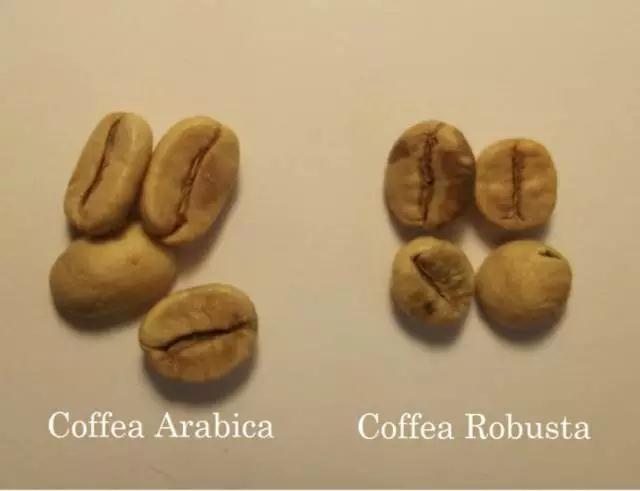
Coffee varieties can be divided biologically into Arabica, Robusta and Liberica. The world's leading drinkable varieties are arabica and robusta, but liberica is often ignored because of its low yield or poor quality.
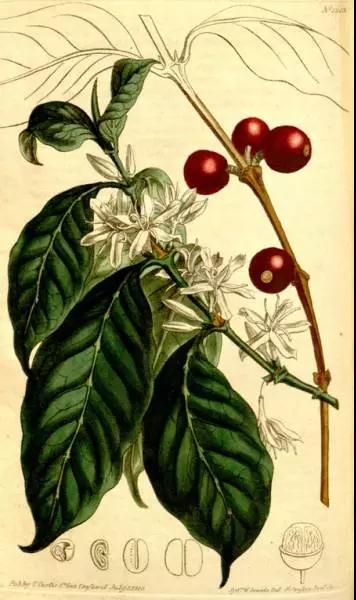
Generally speaking, Arabica is mainly used in single or boutique coffee, while Robusta is used to make instant coffee. Although Arabica can be defined as premium coffee and Robusta as secondary, it does not have to be classified in this way, and it is more appropriate to distinguish it according to its own favorite taste. In terms of taste, the United States and Japan drink light coffee made from Arabica more often, while Europe prefers Italian concentrate made from a mixture of Arabica and Robusta.
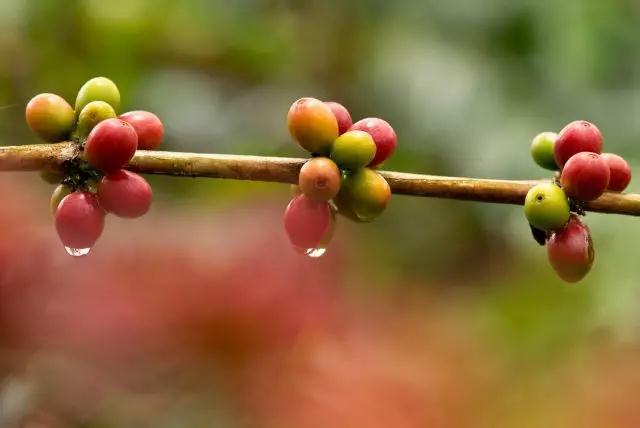
Arabica: premium coffee beans with excellent flavor and aroma
Arabica is a representative variety of Ethiopia, which is also produced in South Africa, Africa and Asian countries, accounting for 70%--75% of the world's coffee production. Arabica is less resistant to pests and diseases, so highland areas are more suitable for cultivation, especially Arabica beans produced in highlands above 1500 meters are of the best quality.
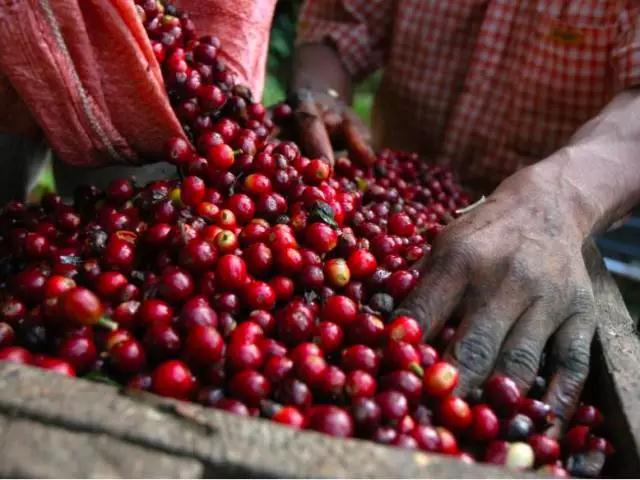
The good quality produced by the effort like this, with a balanced flavor, taste and aroma, can be certified as high-grade coffee beans, mainly used in individual coffee or boutique coffee. The three well-known coffee beans: Kona in Hawaii, Blue Mountain in Jamaica and Moka in Yemen, belong to the Arabica variety. Arabica raw beans have a dark, narrow appearance, known as the highest quality of high-quality Arabica varieties, characterized by sweet, sour and aroma and other rich flavor.
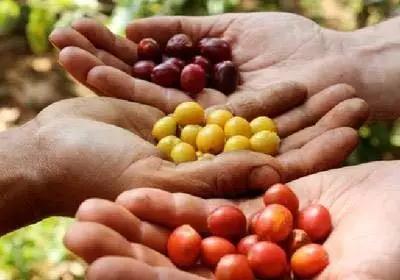
Robusta: strong sour taste and strong taste
Robusta is of African origin and accounts for 30% of the world's coffee production. The word Robusta means "tenacity". In fact, this kind of coffee tree is not only resistant to diseases and insect pests, but can survive in any soil, even in the wild. Therefore, it can also be planted in high-temperature areas, growing fast and easy to cultivate, and has the advantage of low price, which is mainly used to mix beans or make instant coffee as the main raw material. Some Robusta produced in India, Africa, Brazil and other places have a strong sour taste, high caffeine content and rich taste.
Recently, there are also varieties of Arabusta, which mate with Arabica varieties and have better taste and aroma.
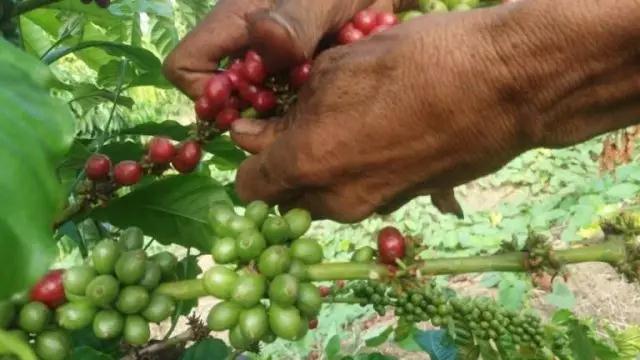
The appearance of Robusta is bulging oval, and raw beans are light brown or yellowish brown with grass green and yellow luster. Compared with Arabica varieties, the taste is more fragrant and lighter, with less sour taste and more bitter taste.
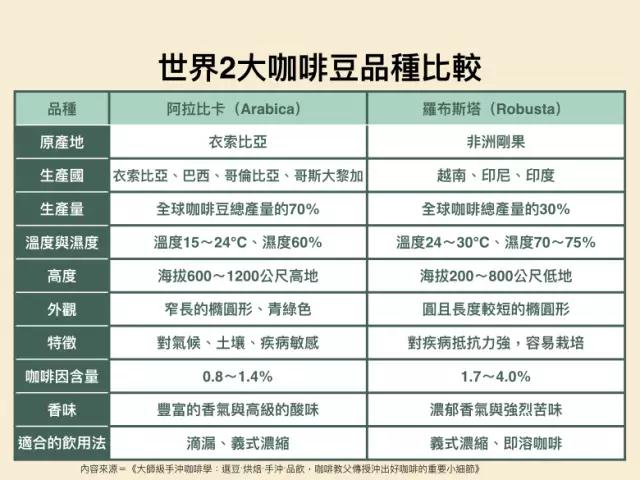
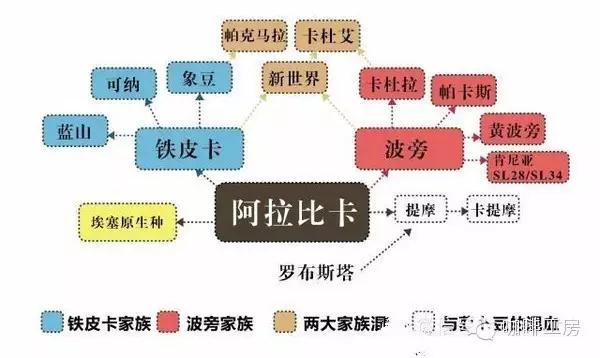
Coffee variety Essex sa variety
Ethel sa is a variety discovered in 1904, which is native to the Charlie River Basin in Africa, with small fruit and high yield per plant, especially a drought-resistant variety. The product has a strong flavor, slightly bitter taste and less cultivation.
Coffee variety iron pickup
Typic: the oldest native variety in Ethiopia, all Arabica are derived from Tibika. The top leaf of Tiebika is bronzed and the bean body is oval or thin in shape; the flavor is elegant, but the physique is weak, the disease resistance is poor and the fruit yield is less. Excellent manor beans such as the Blue Mountains of Jamaica, Manning of Sumatra and Kona of Hawaii all belong to Tibika. One of the characteristics is that the top leaf of Tibica is bronzed.
Typic raw beans are slightly warped at both ends and oval in appearance. The bean body is flat and thin from the side. Even if the altitude of the planting area is different, the thickness of the side of the raw bean will not be too different.
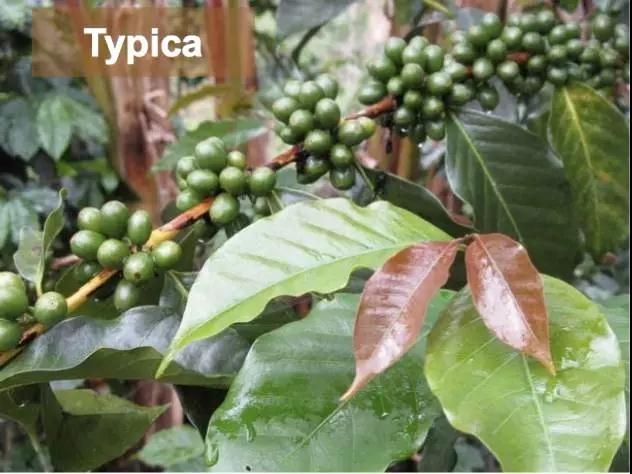
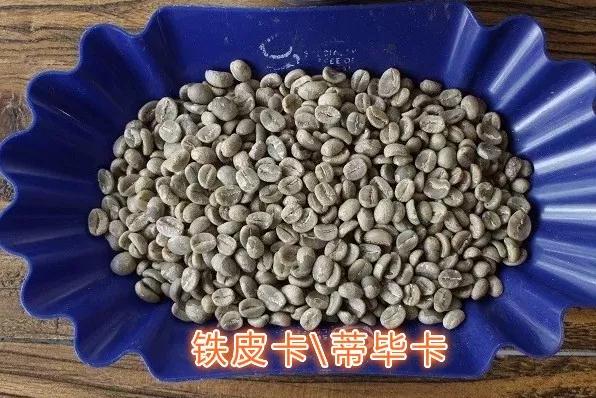
[gene mutant-Tieka variety]
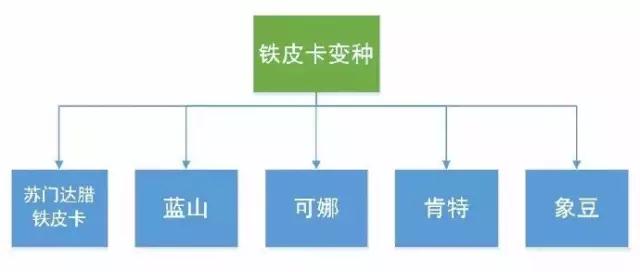
Iron pickup mutant Sumatra manning
The main producing areas of Indonesian coffee are Sumatra, Java and Sulawesi, of which "Manning" from Sumatra is the most famous.
Lintong is also known as Sumatran Coffee, Lake Tawa at the north end can be called Aceh Coffee or Lake Tawa Coffee, and the area between Lindong Coffee and Lake Toba can be called Manning.
Mantenin has a strong taste, with a strong mellow and rich and lively sense of movement, neither astringent nor sour, mellow and bitter can be fully revealed. The appearance of Mantenin coffee beans is arguably the ugliest, but coffee fans say that the worse the Sumatran coffee beans are, the better, mellow and slippery they are.
Four kinds of Manning were collected, which are:
Golden Manning Gold Mandheling
SumatraIsland, Mandehling Longberry, Timtim Belangele (timtim Mantenin)
Lin Dong Manning G1 Lintong Mandheling Grade-1
Emerald Manning (Aceh, Aceh province, Sumatra)
Photos of raw beans

Image above: gold Manning Gold Mandheling semi-washed raw beans

Image above: horse Manning full-sun raw beans, which are crossed between Arabica and Robusta, called Timor and timtim in Indonesia.
TimTim--
Timor Hybrid, which translates to East Timor hybrid, that is, the hybrid of Arabica and Robusta. The familiar Catimor is hybridized with it again.
Tim Tim---- horse face Manning longberry
Tim Tim is a bean from Indonesia. Because of its long shape, many people call it Ma Mian Dou, and some people call it long Manning. In fact, tim tim is not a purebred bean, but a natural cross between Arabica coffee and Robusta coffee, which was discovered on the island of timor in the 1940s and cultivated for its natural disease resistance. In America this variety is called Hybrido de Timor, or Tim Tim for short, and in Indonesia it is also called Bor Bor.

Image above: Lin Dong Manning G1, although the grade is Grade-1, it is still difficult to change the characteristics of high defect rate of Indonesian beans, about 8% of defective beans.
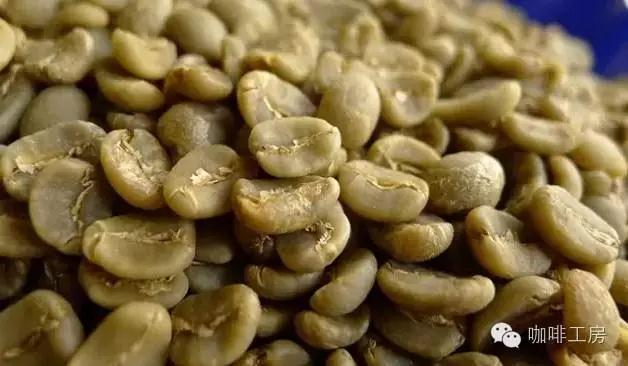
Image above: Emerald Manning (Aceh, Aceh, Sumatra), 19 mesh +, raw beans are green and full, glittering and translucent, like an emerald
Iron pickup variety Lanshan
Blue Mountain (BlueMountain): blue Mountain, which is popular all over the world and hard to get a bean, comes from the iron pickup family.
The history of Jamaican coffee can be traced back to the 18th century. The British introduced coffee trees to Jamaica and planted coffee in the Blue Mountains, which is divided into high-altitude Jamaican Blue Mountain Coffee, Jamaican Alpine Coffee and Jamaican Coffee. Different grades also determine different prices.
Jamaican Blue Mountain Coffee
(Jamaica Blue Mountain Coffee), of which Blue Mountain Coffee and Alpine Coffee are each divided into four grades. From top to bottom in terms of quality, NO.1, NO.2, NO.3 and PB,PB are round beans. According to CIB standards, only coffee grown above 666m above sea level is called Jamaican Blue Mountain Coffee.
Jamaican alpine coffee
(Jamaica High Mountain Supreme Coffee Beans) the coffee produced in the Blue Mountain area of Jamaica is called Alpine Coffee, which is second only to Blue Mountain Coffee in quality, and is called the brother breed of Blue Mountain Coffee by industry insiders. Jamaica Blue Mountain caffeine produces very little, so if you want to taste Jamaican flavor coffee, then Jamaican Alpine Coffee is your best choice.
Jamaican Coffee
(Jamaica Prime Coffee Beans). Coffee is grown outside the Blue Mountains and is called Jamaican coffee. It turns out that people in the coffee industry in China generally have a wrong understanding that only coffee grown in the Blue Mountains above 1800 meters above sea level can be called Blue Mountain Coffee. In fact, there is only one manor on the top of the Blue Mountains above 1800, that is, Amber, which is of Chinese descent. The owner of the manor is surnamed Lyn (Lin). Originally from Guangdong, China, the manor has a land area of only 30 hectares and its output is very small. Blue Mountain Coffee is mainly distributed in 5 mountainous areas such as John Crow,St.John's Peak,Mossman's Peak,High Peak,Blue Mountian Peak in the Blue Mountains.
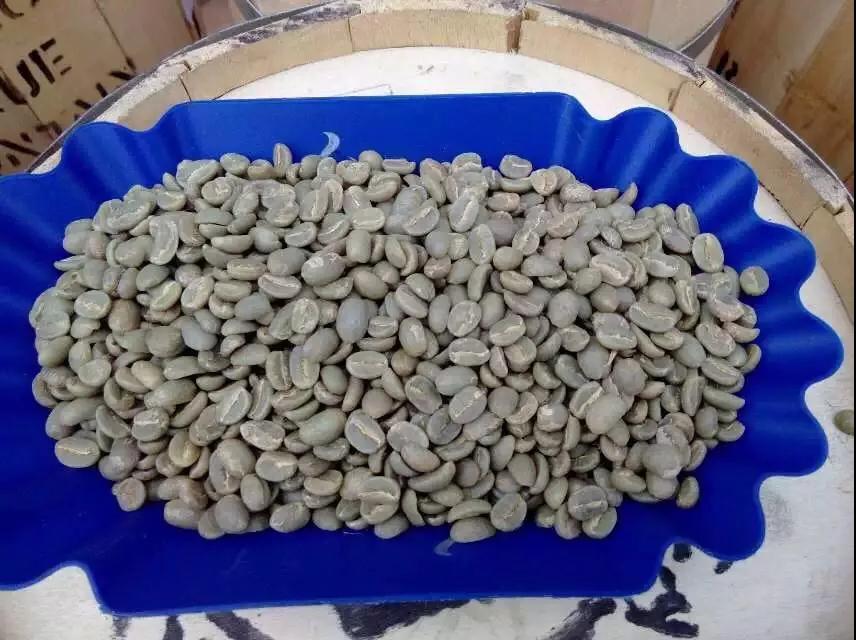
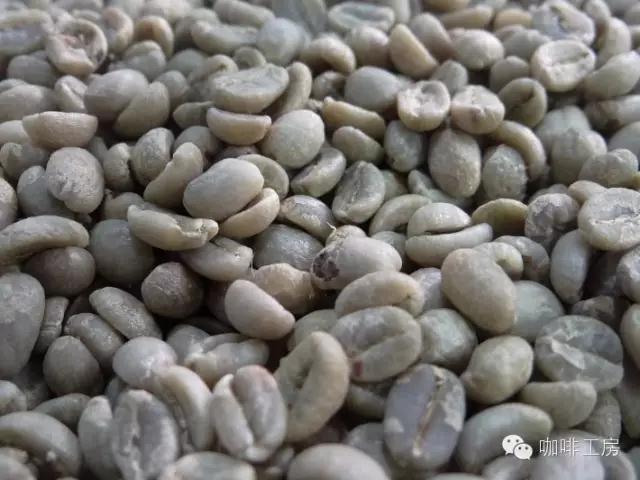
Iron pickup variant of Hawaii Kona
Kona: although planted at an altitude of several hundred meters, Kona from the Big Island of Hawaii, with a mild sea breeze and fertile volcanic soil, has an incomparably clean sour and sweet taste. Compared with the blue mountains with higher elevations, it is even worse.
Iron pickup mutant elephant bean
A mutant of Maragogype,Typica having large long twisted fruit and long internodes and large leaves. The output is relatively low.
It was first discovered in 1870 in the Maragogype bean-producing area of the state of Bahia in northeastern Brazil that the bean was at least three times larger than the average Arabica, hence the name. The taste of elephant bean is poor in low altitude area, but it has better flavor at high altitude, mild sour taste and sweet fragrance. (the picture shows elephant beans)
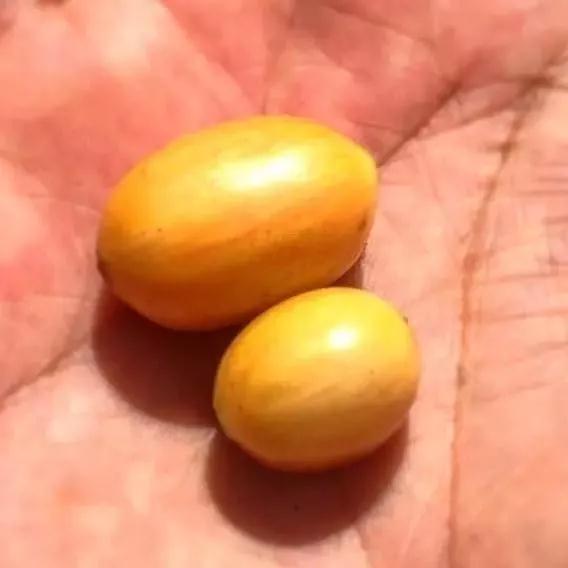
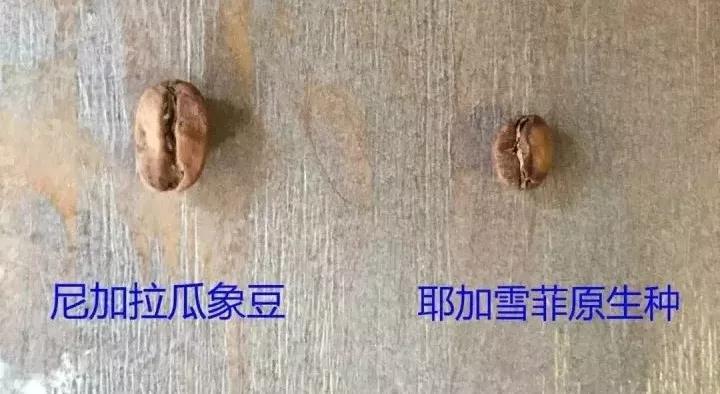
Iron pickup mutant Pacamara
Pacamara: the hybrid variety of Pacas (Pacas) and elephant bean (Maragogype), with a large bean body second only to elephant bean, is an excellent variety produced in El Salvador in the 1950s, and has achieved good results in cup test in recent years.
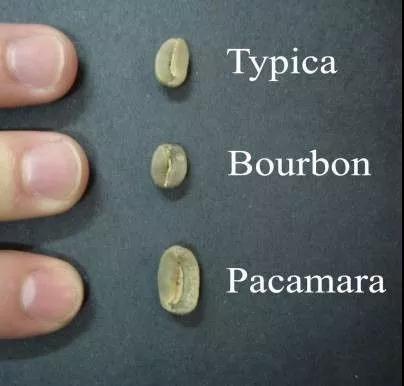
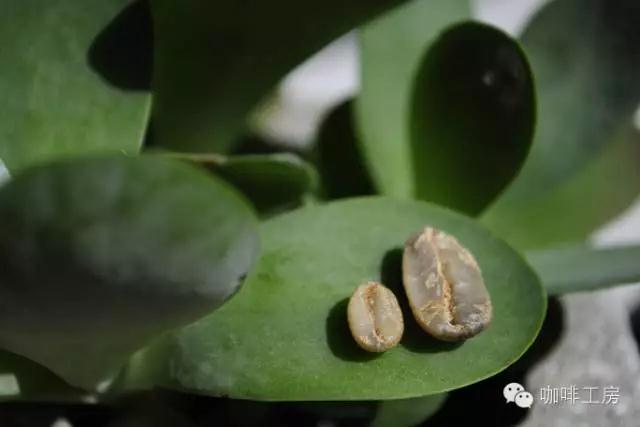
Kent, a variety of iron pickups.
Kent: the hybrid variety of Tibika found in India has high yield and strong disease resistance, but it has not achieved good results in the cup test.
Bourbon coffee bourbon species
Bourbon: a variant of the early (prehistoric coffee) Tibika that changed its shape from thin to round after it was transplanted to Yemen. It was named bourbon in 1715 after France transplanted round beans from Yemeni mocha to the island of Bourbon on the east coast of Africa (renamed Reunion after the French Revolution). Bourbon beans spread to Brazil and Central and South America in 1727, and the British transplanted Yemeni mochas to St. Helena Island (where Napoleon was later imprisoned) in 1732. Bourbon is the winner of the American boutique coffee cup test.
Bourbon, the second species caused by the Typica mutation, is the oldest coffee variety in existence, and the green fruit appears bright red when it is ripe.
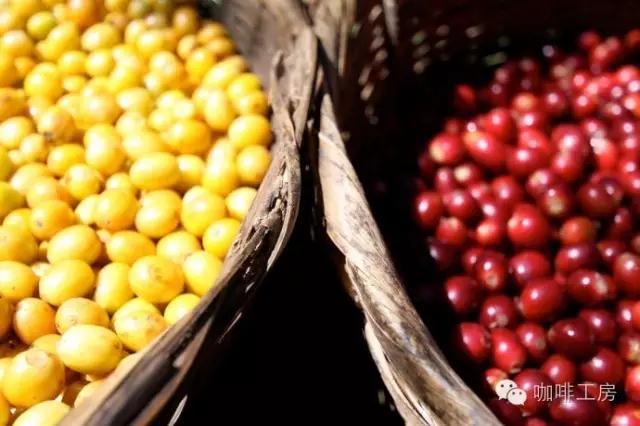
[gene mutant-bourbon variety]
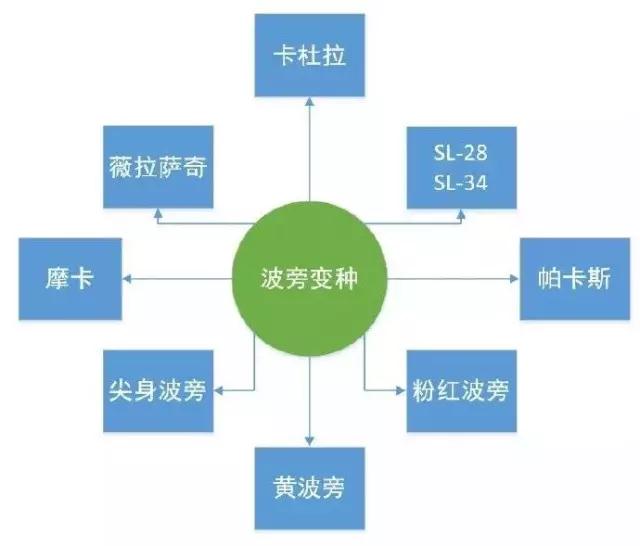
Bourbon Coffee Red Bourbon
Red Bourbon After the general coffee tree blossoms, the color change of the coffee fruit is: green> turn slightly yellow> turn slightly orange> turn mature red> turn ripe dark red, so some people call it "red bourbon species", in fact, red bourbon, that is, we generally call Bourbon species. Bourbon, grown at higher altitudes, usually has a better aroma, a brighter acidity, and even a red wine flavor.
Bourbon is a coffee tree species belonging to a branch of Arabica species, generally bearing red fruit, called red bourbon, in addition to yellow bourbon, orange bourbon, yellow bourbon relatively low yield, but better quality.
Bourbon Coffee Yellow Bourbon
The yellow bourbon variety is a cross between bourbon and other varieties. Because of its low yield and poor weather resistance, it is not widely cultivated. However, when planted at high altitudes, it will have excellent flavor performance, which is more common in recent years. Yellow Bourbon, yellow when ripe, originally found in Brazil, now grown mainly in Brazil. It is thought that it may have been mutated by crossing the red-fruited Bourbon species with a yellow-fruited variety of iron-pica called Amerelo de Botocatu.
Palate characteristics: sweet soft fruit sweet, obvious nutty flavor, balanced soft acidity, bitter slightly clean, rich chocolate aroma and nutty flavor, bright and refreshing taste.
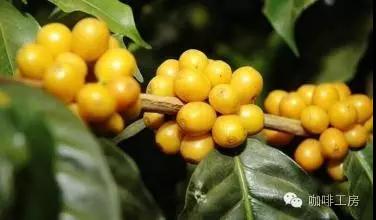
Bourbon coffee powder bourbon
Pink bourbon, as its name implies, its coffee cherries are romantic pink when ripe. It is a very rare new variety, which is bred by the cross between red bourbon and yellow bourbon. The reason why pink bourbon is rare is that it is difficult to maintain this beautiful pink, sometimes some orange bourbon will be harvested, that is because the color of coffee fruit is ultimately determined by the recessive genes in the pollen grains. Among the pollen grains we selected for hybridization, there are both yellow genes inclined to yellow bourbon and red genes inclined to red bourbon, and these are recessive genes, which are very easy to interfere with each other.
At present, pink bourbon can be seen in Colombia and Guatemala. Take this batch of pink bourbon coffee as an example, there are about 1800 coffee trees. Each tree produces about 1.8kg fresh fruit in the first production season. After peeling and pulp treatment, about 0.36kg coffee beans are obtained. In a normal production season, the output of this batch of coffee is less than 650kg.
Taste characteristics: sweet orange, sweet sugarcane, pleasant juice, small tomato
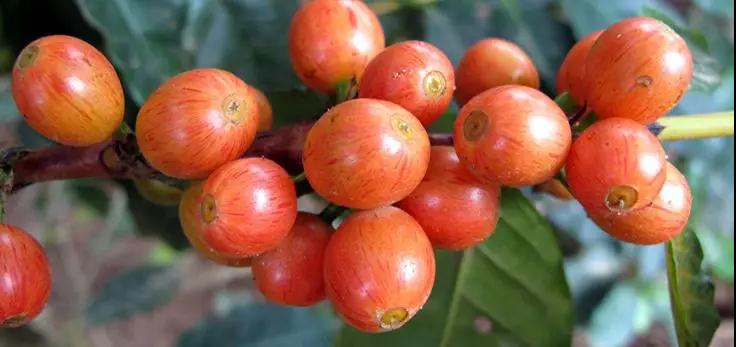
Bourbon variety pointed body bourbon
Pointed Bourbon (Bourbon Pointu): found in Bourbon Island in 1810, beans changed from round to pointed, with only half the caffeine content, but in small amounts, weak and extremely precious (mostly cultivated in the laboratory).
Bourbon Pointu has two other names, Laurina and Leroy, but neither is as loud as the first name. The reason why it is called sharp bourbon is that the bean shape is long and narrow and both ends are pointed, while the native species bourbon (some call it round bourbon) has a shorter bean body and a slightly oval outline.
Because of its good flavor and low caffeine content (which does not affect sleep), sharp bourbon has been popular as early as the 18th century, with many celebrities, such as French King Louise 15, and the novelist Balzac is a "fan". During the two hundred years of the 19th century, the sharp bourbon was widely planted on the island of bourbon, and its annual production reached a peak of 4,000 metric tons in 1800, but then a series of disasters such as hurricanes, fire ants and leaf rust followed, so that the planting decreased. Finally, in 1942, the last batch of sharp bourbon was shipped back to France, leaving only a pitiful 200 kilograms, and since then, sharp bourbon disappeared without a trace. Even the official documents are no longer mentioned. After the 1950s, coffee was no longer grown on Reunion, and agriculture on the island turned completely to other crops such as sugar cane. Coffee was no longer associated with Reunion, while pointed bourbon was recognized by the coffee industry as "extinct."
In view of this bean, it disappeared for half a century and did not reappear until eight years ago, resulting in the Bourbon pointed body of the country of origin La Reunion Island in the international market. After the price reached more than 500yuan per 100g, Colombia also began to grow this bean, and only Camilo Merizalde, which is the source of many WBC champion beans, dared to take over the transplant of this bean, so this coffee bean, which produces only a few tons of coffee every year, is expensive.
Flavor description in the file: bright sour taste, blueberry, vanilla smell, velvety smoothness
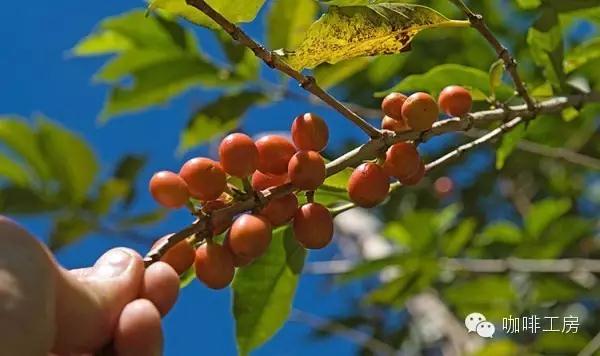
SL28 , SL34
Kenya "SL28" and "SL34": French, British missionaries and researchers in the early twentieth century in Kenya screening, breeding out of Bourbon lineages, a century has adapted to Kenya's high concentration of phosphoric acid soil, breeding Kenya's characteristics of sour spirit, top Kenya coffee are from these two varieties, but transplanted elsewhere is tasteless.
Niya coffee grades are divided into seven grades according to the size of the coffee beans, and are divided into six grades according to the taste from top to bottom. Kenya's best coffee grade is Bean Berry Coffee (PB), followed by AA++, AA+, AA, AB, etc., in that order. Fine coffee is shiny, delicious and slightly aromatic. "Kenya AA" is especially well received in taste.
Graded according to bean size:
The best coffee grade in Kenya is Bean Berry Coffee (PB), followed by AA, AB, etc. in that order.
PB (PeaBerry) round beans: This is the grading for small round beans. This refers to the coffee fruit growing only one stone, rather than the common two stone
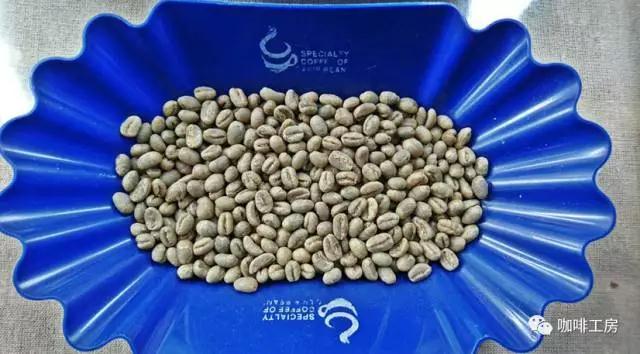
AA: this is a more common grade. Coffee beans are larger in size and have a particle size higher than 18 mesh or 7.22mm. This kind of beans usually get the highest price.
AB: this grade coffee bean combines A (particle size 16 mesh or 6.80mm) with B (particle size 15 mesh or 6.20mm); accounts for about 30 per cent of Kenya's annual coffee production.
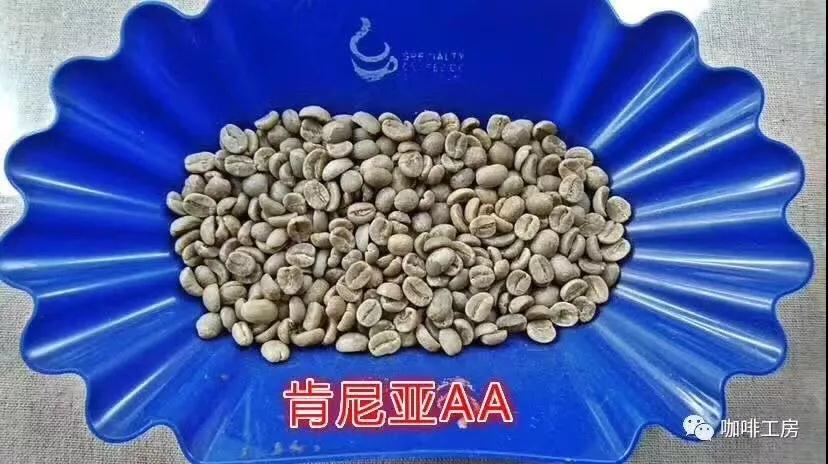
Bourbon variety Kadura
Caturra: It is a single-gene variant of bourbon discovered in Brazil in the 1950s. It has better yield and disease resistance than bourbon. The tree is shorter and easier to harvest. Unfortunately, it encounters the same problems as bourbon. As a result, it takes a year off and its flavor is equal to or slightly inferior to bourbon beans.
But it is more adaptable, can be planted in high density, does not need shade trees, direct exposure in the sun can also be vibrant, so he also has a name_"Sun Coffee"(Sun Coffee).
Kadura is suitable for low altitudes of 700 meters to high altitudes of 1700 meters, but the higher the altitude, the better the flavor and the lower the soybean yield. There are also varieties of yellow cadura in Central and South America, but they are not as popular as yellow bourbon.
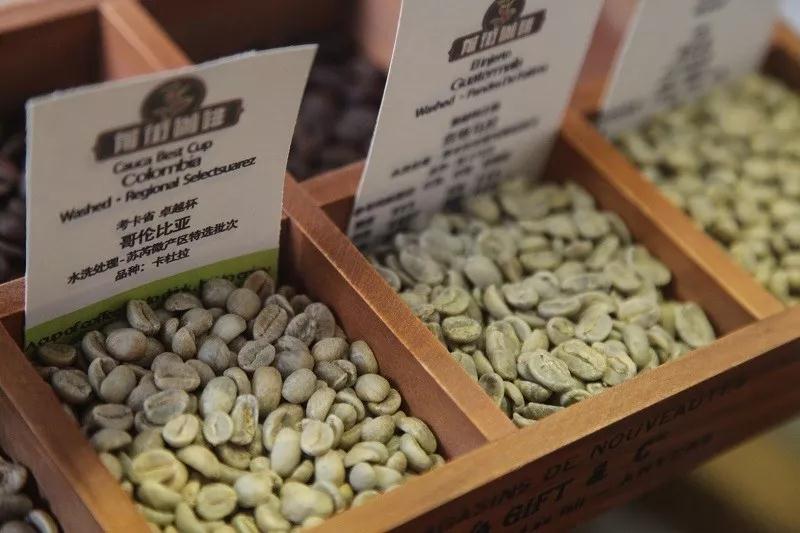
Bourbon variety Kaduai
Catuai: Kaduai is a hybrid of New World and Kaddura. It inherits the advantage of Kaddura's low stature and makes up for the weakness of Arabica fruit. The result is solid, and it is not easy to fall when the strong wind blows. The biggest regret is that its overall flavor is slightly more monotonous than Kadura.
Kaduai also has the difference between red fruit and yellow fruit, and red fruit wins more often than yellow fruit. Kaduai, Kaddura, New World and bourbon are the four main varieties of coffee in Brazil.
Bourbon variety Pacas
Pacas: a bourbon variety found in El Salvador. In 1935, the Salvadoran coffee farmer "Don Alberto Pacas" selected a high-capacity San Ramon bourbon variety to be planted on a farm. In 1956, his coffee tree produced more fruit than the same kind of coffee tree. Professor "Dr. William Cogwill" of the University of Florida identified this as a genetic mutation in bourbon and named it "Pacas".
Pacas, with its high output and good quality, is popular in Central America. Currently, 68% of El Salvador is bourbon, while Pacas has 29%. Similar to Kaddura of Brazil (Cuturrra) and Villa Sacrhi of Costa Rica. Pacas now accounts for about 25 per cent of El Salvador's coffee production, which is high and has always been popular. It produces coffee with high sweetness, similar to bourbon, but brighter sour taste than bourbon.
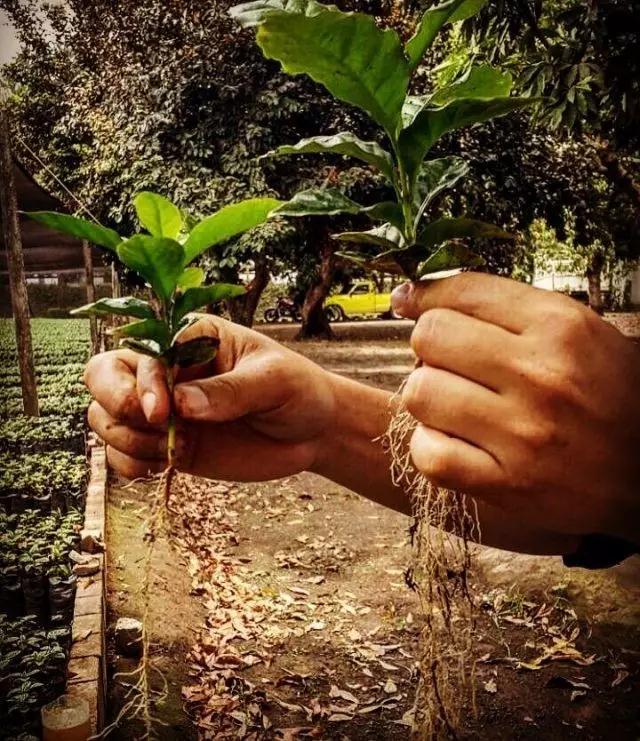
Pacas saplings
Bourbon variety Vera Saatchi
The bourbon variety, which was first discovered in Costa Rica in the Villa Sarchi:1960 era, has often appeared in the cup test list of excellence in recent years, which can be described as a promising dark horse. This is a rare variety bred through the cross of red bourbon tree species. Strong wind resistance, preference for high altitude environment, excellent acidity and a variety of fruit aromas, high sweetness, bright and delicate citrus acidity and low raisin and nut aromas, high complexity and full balance.
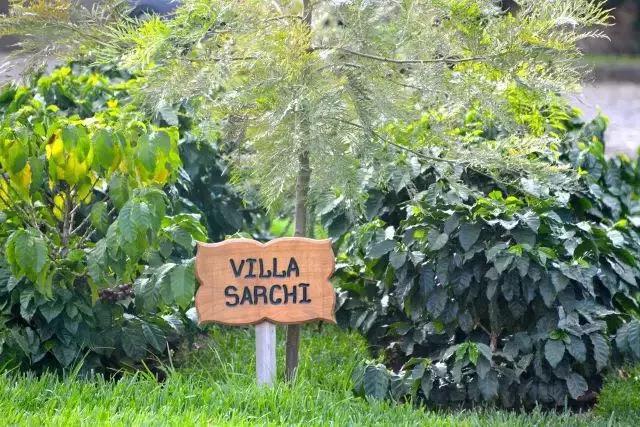
It is also a dwarf bourbon, found in the village of Saatchi in the western valley of Costa Rica, suitable for high-altitude organic cultivation, lively fruit acid and obvious caramel flavor.
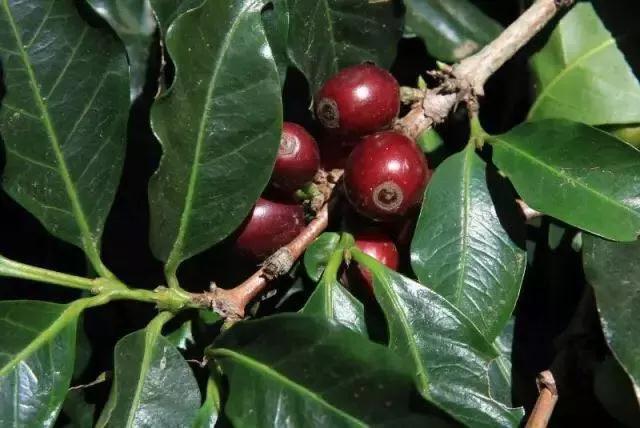
New world of hybrid varieties
Mundo Novo: a natural cross between Bourbon and Sumatra Tibica, first found in Brazil. Because of its high yield and resistance to diseases and insect pests, it was widely planted in Brazil in the 1950s and was praised as the new hope of the Brazilian coffee industry, but the trees were tall and difficult to harvest.
Hybrid variety Niga Java
The Javanese species of Nicaragua is a long-grained species that is rare in Java today. The lemon tree manor was sown successfully in Nicaragua for the first time. Java provenance comes from Tiebika seed system. Tibica in Java had a serious outbreak of leaf rust, which led to the almost extinction of Tibika in Java, while the lemon manor inadvertently got a bag of seeds and asked experts to identify the young plants after sowing seedlings. Only then did I know it was a Javanese species. Lemon tree first participated in COE with this variety in 2007, but it won the runner-up of Nicaragua COE that year, and the bidding price even exceeded the champion of that year.
Hybrid variety Mara Kadura
The hybrid between elephant bean and Kaddura (Maragogypepe × Caturra) cultivated in Guatemala received higher recognition after Nicaragua COE won the championship in 2009. With rich fruit like beans and elegant acidity of Kaddura, it has high mellow thickness, full floral aroma and high sweetness.
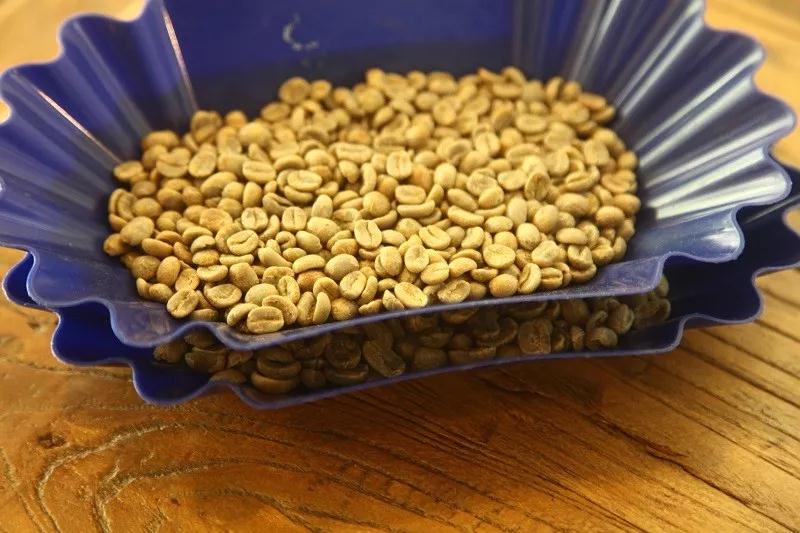
Arabica geisha / Rosa
Geisha: a derivative of the Tibika family, it was exported from the Geisha Mountains of southern Ethiopia in 1931 (Geisha is synonymous with Japanese geisha). After being unknown in many countries, it was transplanted to Panama in the 1960s and did not begin to win cup tests until 2005.
| Rose summer, also known as geisha
The pronunciation of Geisha is the same as Japanese geisha, so it is also called geisha coffee. Because the tree species are taller than ordinary coffee trees, they are originally planted in a small area of the manor and are used as windbreaks.
| | Rose summer, is a variety |
The species of Geisha was first discovered in the rose forests of Ethiopia in 1931 and later sent to the Coffee Institute in Kenya. Introduced to Uganda and Tanzania in 1936 and introduced to Costa Rica in 1953.
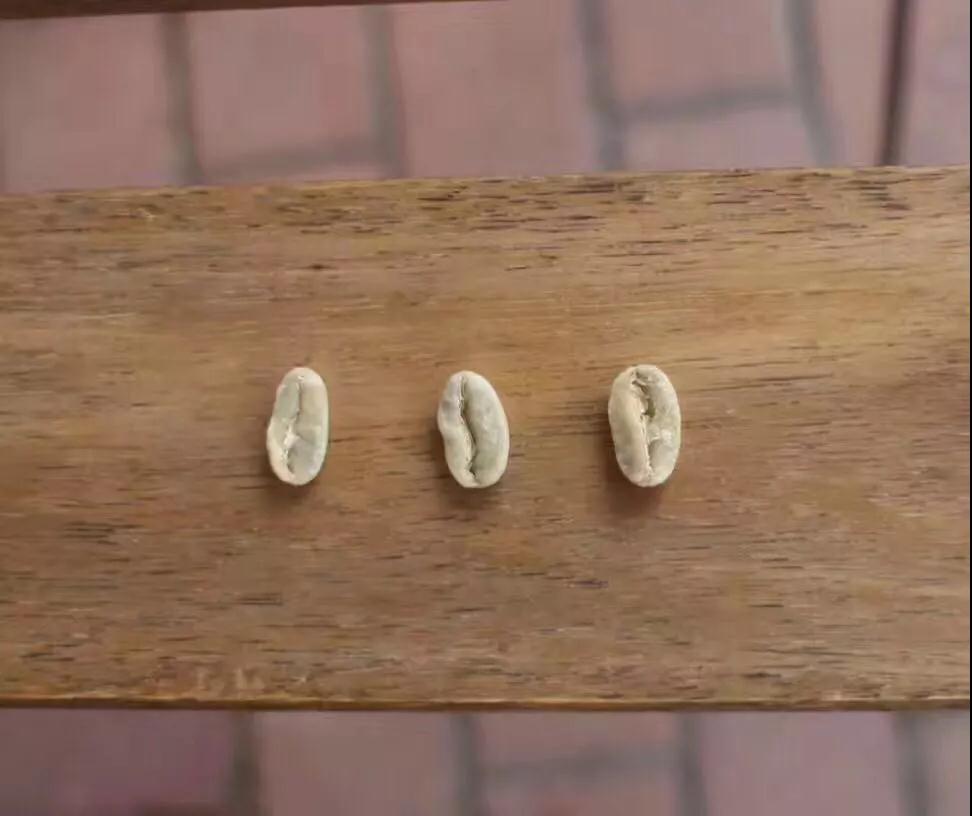
| | Red, green, blue |
Only the rosy summer of the Jade Manor can be distinguished by [red mark, green mark, blue mark]:
Red mark (Special-Geisha): a collection of the top batches of the Jadeite Manor, all planted above 1600 meters above sea level (or even more than 1900 meters above sea level), and cup test scores above 90 points.
Green sign (PrivateCollection-Geisha): the rosy summer of different plots in the Jadeite manor, planted at 1600-1800 m above sea level
Blue label (Geisha1500): the rose summer of jadeite estates, planted above 1500 meters above sea level
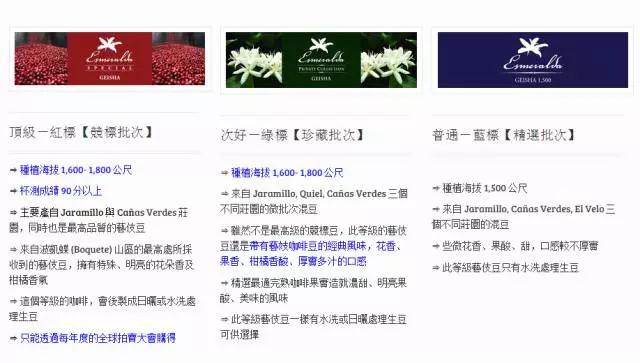
| Rose summer, unique fragrance of flowers and fruits
Among the many coffees, the aroma of flowers and the intense sweetness of tropical fruits are the consistent characteristics of Geisha.
Hybrid between Arabica and Robbosa bean (Interspecific Hybrid)
Hybrid variety Timo
Timor: a natural hybrid found in East Timor, an island country at the eastern end of the Nusa Tenggara Islands, with 44 chromosomes close to Arabica, but with a mediocre flavor, Timo's low acidity and lack of characteristics, it is often used as a low-cost formula in Taiwan. However, East Timor also has high-altitude pure Tibica treated with water. Before buying, it is important to find out whether it is a hybrid or a purebred iron card water washed beans, the quality of the two is very different, the former is mediocre, and the latter is amazing.
Hybrid variety Katimo Katim
In Catimor:1959, the Portuguese mixed Brazilian Kaddura with Timo and bred the second generation of Cartimo, which has strong disease resistance and yield capacity. But the flavor is also poor, and it is an important variety of commercial beans at present. In recent years, botanists from all over the world have turned to the interaction between Arabica and Katimodo in an attempt to reduce the pedigree of Luodou in order to improve the bad reviews of the Katimo Cup.
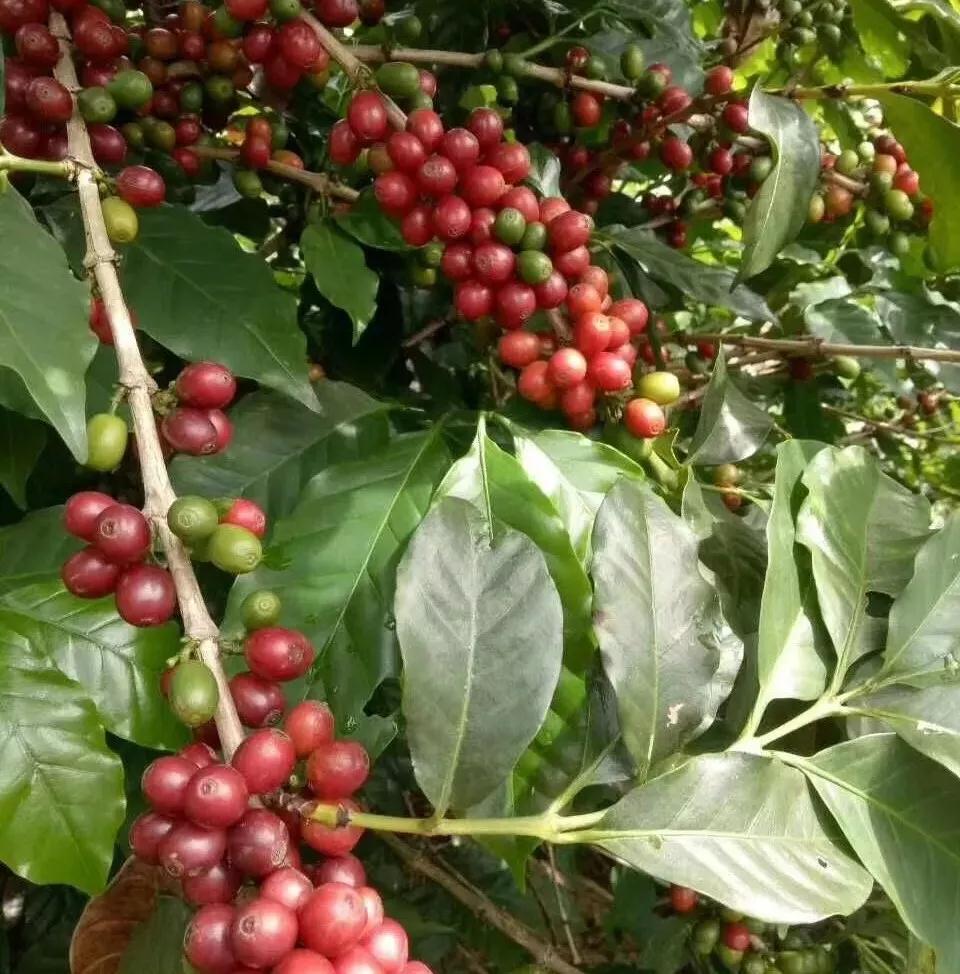
Hybrid variety Ikatu
Icatu: many generations of Brazilian hybrid improved varieties, has been in the Brazilian "extraordinary Cup" top 10. In the past, Arabica mixed with turnip beans Arabusta "Arabusta", although increased yield and disease resistance, but the coffee flavor has not been good. Scientists crossed Arabica varieties with Arabica varieties such as Kaddura, New World and Bourbon for many generations, which gradually reduced the bad smell of radish beans and improved the aroma of Arabica beans, thus giving birth to an excellent variety of multi-generation hybrids-Icato.
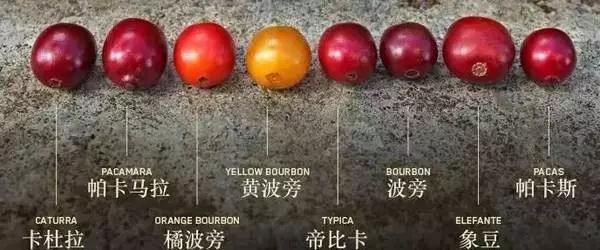
Hybrid variety Ruyilu 11
Ruiru 11: a hybrid breed with heavy yield and low quality developed in Kenya in 1985. There are no varieties of Arabica and sturdy beans that can be regarded as boutique coffee so far, so they are not available in many suppliers that specialize in freshly roasted boutique coffee, such as fresh. However, even many imported specialty coffee suppliers mix the hybrid beans with Blend to reduce costs. From the above-mentioned gene mutants (whether natural or scientific products), their flavor has a lot to do with specific geographical conditions.
Important Notice :
前街咖啡 FrontStreet Coffee has moved to new addredd:
FrontStreet Coffee Address: 315,Donghua East Road,GuangZhou
Tel:020 38364473
- Prev
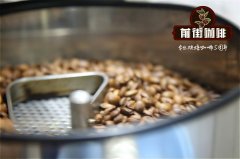
Are Kopi Luwak beans fake in Vietnam? how do you brew Kopi Luwak _ Kopi Luwak price list at home?
Professional coffee knowledge exchange more coffee bean information Please pay attention to the coffee workshop (Wechat official account cafe_style) A jin of civet cat droppings can only extract 150g of cat droppings coffee beans, there will be a 20% loss in the baking process. The annual global supply of these coffee beans does not exceed 400 kilograms. So, more than 80% of Kopi Luwak on the market is fake. Musk cat coffee
- Next
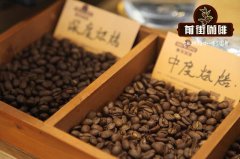
Which brand of Indonesian coffee is good _ the characteristic flavor of Indonesian Java coffee _ is Java coffee expensive
Professional coffee knowledge exchange more coffee bean information please follow coffee workshop (Wechat official account cafe_style) Java Coffee: produced in Java, Indonesia, full of particles, spicy, relatively low acidity, delicate taste, good balance, is a delicate aromatic coffee. Coffee production in Asia is second only to Central and South America. Indonesia has always been the largest coffee producer in Asia.
Related
- Detailed explanation of Jadeite planting Land in Panamanian Jadeite Manor introduction to the grading system of Jadeite competitive bidding, Red bid, Green bid and Rose Summer
- Story of Coffee planting in Brenka region of Costa Rica Stonehenge Manor anaerobic heavy honey treatment of flavor mouth
- What's on the barrel of Blue Mountain Coffee beans?
- Can American coffee also pull flowers? How to use hot American style to pull out a good-looking pattern?
- Can you make a cold extract with coffee beans? What is the right proportion for cold-extracted coffee formula?
- Indonesian PWN Gold Mandrine Coffee Origin Features Flavor How to Chong? Mandolin coffee is American.
- A brief introduction to the flavor characteristics of Brazilian yellow bourbon coffee beans
- What is the effect of different water quality on the flavor of cold-extracted coffee? What kind of water is best for brewing coffee?
- Why do you think of Rose Summer whenever you mention Panamanian coffee?
- Introduction to the characteristics of authentic blue mountain coffee bean producing areas? What is the CIB Coffee Authority in Jamaica?

